Mowing Lawn Tips: Information For Mowing Your Lawn Correctly


Mowing is a love-it-or-hate-it proposition for homeowners. You may think mowing your lawn is a sweaty, back-breaking chore or maybe you consider it an opportunity for healthy exercise as you commune with nature. Either way, mowing lawns properly is a requirement for healthy, vibrant turf.
Lawn Mowing Information
Mowing lawns properly is important in maintaining ongoing health. Mow your lawn when the grass is dry. Diseases spread readily on damp turf and the wet grass can clog your mower. However, don’t mow during the hottest part of the day. Intense heat isn’t healthy for your lawn or you. Mow in a different direction each time to promote even, upright growth. Otherwise, the grass will lean towards the direction in which you mow. Leave the clippings so they can return valuable nutrients to the lawn. If you mow regularly, the short clippings decompose quickly and won’t damage your lawn. However, if you wait too long between mowing, or if the grass is damp, you may need to rake lightly, as a deep layer of clippings can smother the lawn. If the clippings form rows or clumps, rake them lightly to distribute them evenly.
How Often Should Grass be Mowed?
There is no set time for mowing the lawn, but most lawns will require mowing at least once a week during late spring and early summer. To keep your lawn healthy, don’t remove more than one-third of the height at each mowing. Removing more can affect healthy root growth, which means the lawn will need more water during warm, dry months. Cutting the lawn too close can also increase your lawn’s vulnerability to pests and weeds. As a general rule of thumb, a length of about 2 ½ inches (6 cm.), increasing to 3 inches (8 cm.) during the summer, looks good and promotes deep, healthy roots.
Mowing Lawn Tips
- Don’t mow your lawn in early spring. Instead, wait until the grass shows signs of wilt in late spring or early summer. Mowing too early creates shallow, weak roots that can’t withstand summer heat. This is often the reason grass turns brown in summer.
- Sharpen your blades at least twice every year. Lawns cut with dull blades don’t look as neat and the tips of the grass may turn brown. Ragged edges require more water and increase risk of disease.
- Set your mower slightly higher under trees where the grass competes with tree roots for available nutrients and moisture.
- Grass goes dormant and grows very little during hot, dry weather. Your lawn will be healthier if you don’t mow it frequently during periods of drought.
Gardening tips, videos, info and more delivered right to your inbox!
Sign up for the Gardening Know How newsletter today and receive a free download of our most popular eBook "How to Grow Delicious Tomatoes."

A Credentialed Garden Writer, Mary H. Dyer was with Gardening Know How in the very beginning, publishing articles as early as 2007.
-
 10 Best Apartment Plants To Turn Your Small Space Into An Oasis
10 Best Apartment Plants To Turn Your Small Space Into An OasisThe best apartment plants can lend an ambience of the tropics, brighten up a space, or add a touch of drama, and turn an apartment into a relaxing oasis.
By Amy Grant
-
 Grow a Bathroom Oasis: 8 Best Bathroom Plants With No Light or Low Light
Grow a Bathroom Oasis: 8 Best Bathroom Plants With No Light or Low LightSome apartment dwellers grow the best bathroom plants with no light or low light. Read how one of our favorite plant lovers does it in the big city.
By Teo Spengler
-
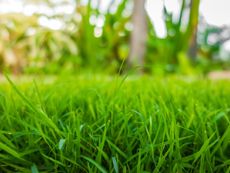 Sustainable Turf Species For A Greener Lawn
Sustainable Turf Species For A Greener LawnClick here for some of the most sustainable types of turf grass you can grow for an eco-friendly lawn.
By Bonnie L. Grant
-
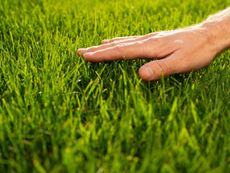 How To Grow A Sustainable Lawn
How To Grow A Sustainable LawnAdjust your thinking about a perfect green lawn and consider more sustainable methods. Click here to learn how.
By Mary Ellen Ellis
-
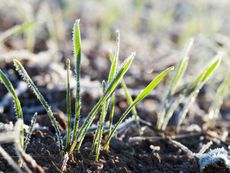 Will Frost Kill Grass Seed And How To Help New Turf Survive
Will Frost Kill Grass Seed And How To Help New Turf SurviveLearn how to help your newly sown grass survive frost and freezing weather.
By Amy Grant
-
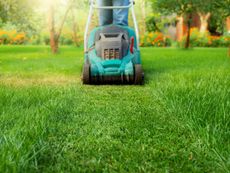 Lawn Problems That Aren’t Really Problems
Lawn Problems That Aren’t Really ProblemsYour lawn may not require as much work as you think. Learn which common problems aren’t really problems.
By Teo Spengler
-
 Why A Manual Push Mower Is Good For You And The Environment
Why A Manual Push Mower Is Good For You And The EnvironmentReel mowers are making a comeback, but why? Click here to learn about reel mower pros and cons.
By Amy Grant
-
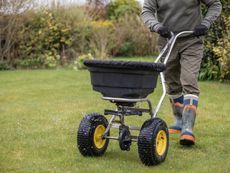 Fertilize Grass In Fall For A Lush Lawn In Spring
Fertilize Grass In Fall For A Lush Lawn In SpringFor everything you need to know about fertilizing your lawn in the fall, click here.
By Susan Albert
-
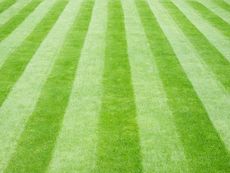 Tips For Mowing Stripes In Lawn
Tips For Mowing Stripes In LawnWouldn’t it be great to have stripes in your lawn like a sports field? Learn how here.
By Susan Albert
-
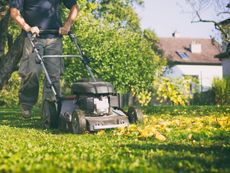 Late Summer Lawn Care Checklist
Late Summer Lawn Care ChecklistPlan to do some late summer care and maintenance of your lawn so it will be healthy and beautiful in the spring. Here are some tips.
By Laura Miller